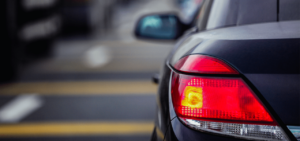We all know that glass is fragile. We are careful with stemware and wary of chipped glasses, but we seem to forget to care for the glass in our windshields. On the highway, rocks flung up by other cars can hit your windshield so hard that you instinctively take cover behind your steering wheel. While most rocks never make it through the glass, they often cause damage even if you can’t see it.
Most debris that hits your front window never makes it through because of the type of glass used. In the United States, front windshields must be laminated safety glass. This glass consists of a polycarbonate layer sandwiched between two layers of glass. The glass is glued to the frame of the car, which gives it added stability. Additionally, the glass is harder and shatters differently from ordinary glass.
When safety glass breaks, the glass breaks into rounded chips instead of sharp shards, reducing the chance of cuts ad lacerations. These chips stick to the lamination layer in the glass, keeping them from filling the vehicle and endangering passengers in an accident. These innovations help control the way the glass breaks but does not prevent it from cracking.
Early Intervention
Your windshield serves more purposes than you may think. As the name implies, it does block the wind while driving, allowing you to arrive at the office looking as put together as you did when you walked out the door. However, it also plays a vital role in maintaining the air temperature in the vehicle and blocking out precipitation, all while allowing you to see right through it. When your windshield cracks or breaks, its ability to perform all of the functions well is compromised.
It may be tempting to keep driving with a small chip or short crack in your windshield. However, ignoring these minor problems can lead to more significant issues. These tiny imperfections can turn into massive cracks overnight with changes in temperature and weather, and while it may not obstruct your view yet, it is illegal to drive with a crack in the driver’s field of view in many states.
Auto repair shops can often fill small cracks and chips if you catch them early. These repairs are inexpensive and invisible to the naked eye. Addressing damage before they have a chance to grow can extend the life of your windshield and save you the cost of replacing the whole windshield.
Bigger Problems
When you are involved in a car accident or struck by large road debris, your windshield can go from perfect to worthless in a matter of seconds. If it has done its job, the glass should remain relatively intact and attached to the lamination layer despite the spider web of cracks that divides it into a million tiny pieces. Yes, the windshield is a loss, and your car is likely not drivable until you get it replaced. Your job at this point is to secure your vehicle to protect the interior.
Anytime you are dealing with broken glass, you should take the utmost care to avoid cuts and scrapes. Safety glass is not 100% safe. It is a good idea to wear thick gloves during the clean-up and cover-up process.
Step 1: Clean up as much of the glass as you can. If you have ever dropped a drink in the kitchen, you know that small pieces of glass can end up in the most remote corners of the room. A dustpan and hand broom work well for sweeping shards off of seats.
After sweeping up the majority of the glass, vacuum the interior of your car to pick up the remaining pieces. A shop vac is the best tool, but a household vacuum may work as well. The glass can easily damage leather seats and other interior elements. So, it is best to vacuum the whole interior even if it appears free of glass.
Step 2: To keep rain, dirt, and leaves from accumulating in your car, you will need to cover the opening with weatherproof material. A clean trash bag or other plastic sheeting will work. The thicker the plastic, the better it will protect your car. Lay the plastic over the opening and cut a piece a few inches larger than the opening to allow for taping around the edges.
Step 3: Before taping the plastic in place, make sure you have a clean surface to which the tape can adhere. Wipe down the surface of the car around the window with a clean, lint-free cloth and degreaser.
Step 4: Automotive painter’s tape will be the most gentle on your car’s finish, but any heavy-duty tape will work. Start by securing the plastic above the windshield. Then, pull the plastic taught and tape it at the bottom. Follow the same steps to secure the plastic on the right and left of the windshield, making sure the plastic is pulled tight across the opening. Once the plastic is secure, tape around the plastic once more, overlapping the first layer of tape for added protection.
Step 5: Make an appointment with a Utah auto repair shop to have your windshield replaced. Most companies offer mobile services and will come to you. Be sure to check with your insurance to see if they will cover all or a portion of the repair.
A crack in your windshield, large or small, is a significant issue that you should not ignore. At some point, you will need to deal with it. Why not choose a time and place that is convenient for you instead of waiting for your windshield to force your hand? Since 1991, Burt Brothers has been meeting customer’s car care needs. With 13 locations across Northern Utah, their ASE-certified technicians can help you get a new windshield installed at your convenience.





